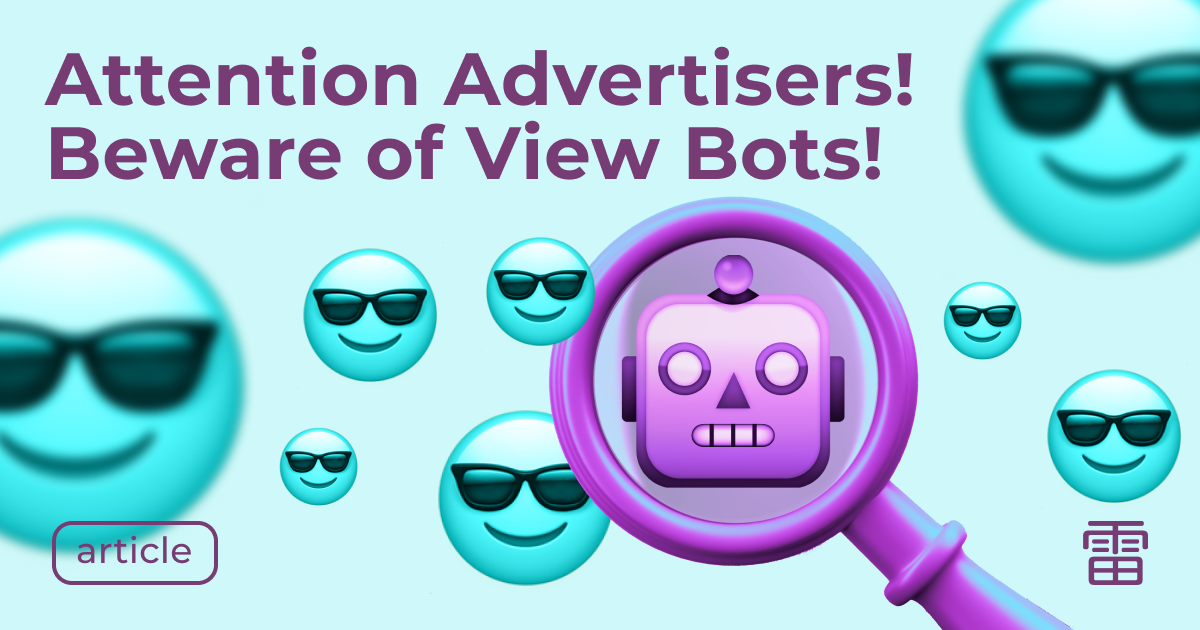In the world of online advertising, there’s one problem that worries many advertisers, marketers, and analysts — view bots. In recent years, they’ve become more than just a headache; they pose a real threat to the accuracy of advertising campaigns and statistics. These bots can distort metrics, creating a false sense of popularity, which directly affects marketing decisions.
In this article, we’ll explain what view bots are, how they work, the different types of view bots, and, of course, how you can avoid their impact on your advertising campaigns. Let’s be honest — if you're not paying attention to this issue, you're risking wasting money on meaningless impressions and getting distorted data.
What Are View Bots and How Do They Work?
Let’s break it down: what exactly are view bots? In the simplest terms, they are automated programs that generate fake views, likes, or other actions, mimicking real users. View bots are used to artificially inflate the statistics of videos, pages, or advertising campaigns, creating an illusion of popularity.
They can be used for different purposes. For instance, on streaming platforms, view bots can simulate a large number of viewers. On social media, they can increase views and likes on posts. In advertising, they can artificially increase the number of impressions or clicks, ultimately leading to incorrect analytics and misguided decisions.
It’s important to note that not all view bots are equally harmful. Some simply boost numbers without affecting the audience, but there are also more aggressive bots that manipulate data to the point where advertisers can’t tell where their real audience is.
Types of View Bots
Now, let’s dive deeper into the different types of view bots so we can understand the specific threats they pose to your advertising campaigns.
1. Fake viewers on streams — These are perhaps the most obvious view bots. They create the illusion that a live stream has a large number of viewers, while in reality, there’s no audience. This can significantly skew the picture for advertisers who base their success on viewer counts.
2. Activity imitators on social media — These bots can like posts, repost them, or leave comments. This makes it look like there’s an engaged audience, but in reality, these actions are carried out by automated systems rather than real people. This is dangerous for advertisers because it can create a false sense of campaign effectiveness.
3. Bots that distort analytics — This is the most complex type of view bot, and it can alter analytics and reporting data. These bots can manipulate the way users interact with content, leading to misleading conclusions about which channels are working and which are not.
Each of these types of view bots can affect your metrics in different ways, and it’s important to understand that even a small error in data can have a big impact on the entire marketing process.
Impact of View Bots on Advertising Campaigns
So, how can view bots affect your advertising campaigns? The answer is simple — they distort all the metrics. Advertisers who pay for impressions or clicks may end up in a situation where most of the traffic they’ve paid for is generated by fake users. Imagine investing money into an ad campaign expecting real views or clicks, only to receive empty numbers.
Moreover, view bots undermine trust in analytics. When you can’t accurately determine how many real people are engaging with your content, it becomes hard to draw the right conclusions. This can lead to faulty strategic decisions, wasted marketing efforts, and even budget overruns.
Let’s not forget the financial losses. If you’re paying for each view or click, and in the end, you’re paying for view bots, that’s money down the drain. Additionally, these fake data points can mislead you, making you base decisions on inaccurate numbers.
How to Identify and Prevent View Bots
Spotting view bots isn’t always easy, but there are a few signs to watch out for. First, if you notice sudden spikes in metrics, this could be a red flag. For example, if video views skyrocket, but there’s no significant change in the content (e.g., it didn’t go viral), it could be the work of view bots.
Also, if your user data seems too “perfect” (for example, all views are from your target audience, or nearly every click leads to conversion), it’s another cause for concern.
When it comes to preventing view bots, a comprehensive approach is key. You can use specialized tools to analyze traffic and help you spot suspicious activity. For example, platforms like Kaminari Click offer solutions for monitoring and protecting against bot traffic, helping you detect fake views and clicks.
Another important step is to use anti-bot technologies that block suspicious activity at the data collection stage. For example, implementing CAPTCHA or other verification methods can help prevent bots from infiltrating your advertising campaigns.
Conclusion
To sum up, view bots are a real threat to advertising campaigns and analytics. They can artificially distort data, leading to incorrect marketing decisions and financial losses. To avoid these issues, it’s essential to continuously monitor data, use anti-bot solutions, and carefully analyze your traffic.
If you want to protect your advertising campaign from view bots and ensure that your data is accurate and reliable, don’t wait any longer. Book a demo with Kaminari Click today and see how our tools can help you defend against fake views and bot traffic!

